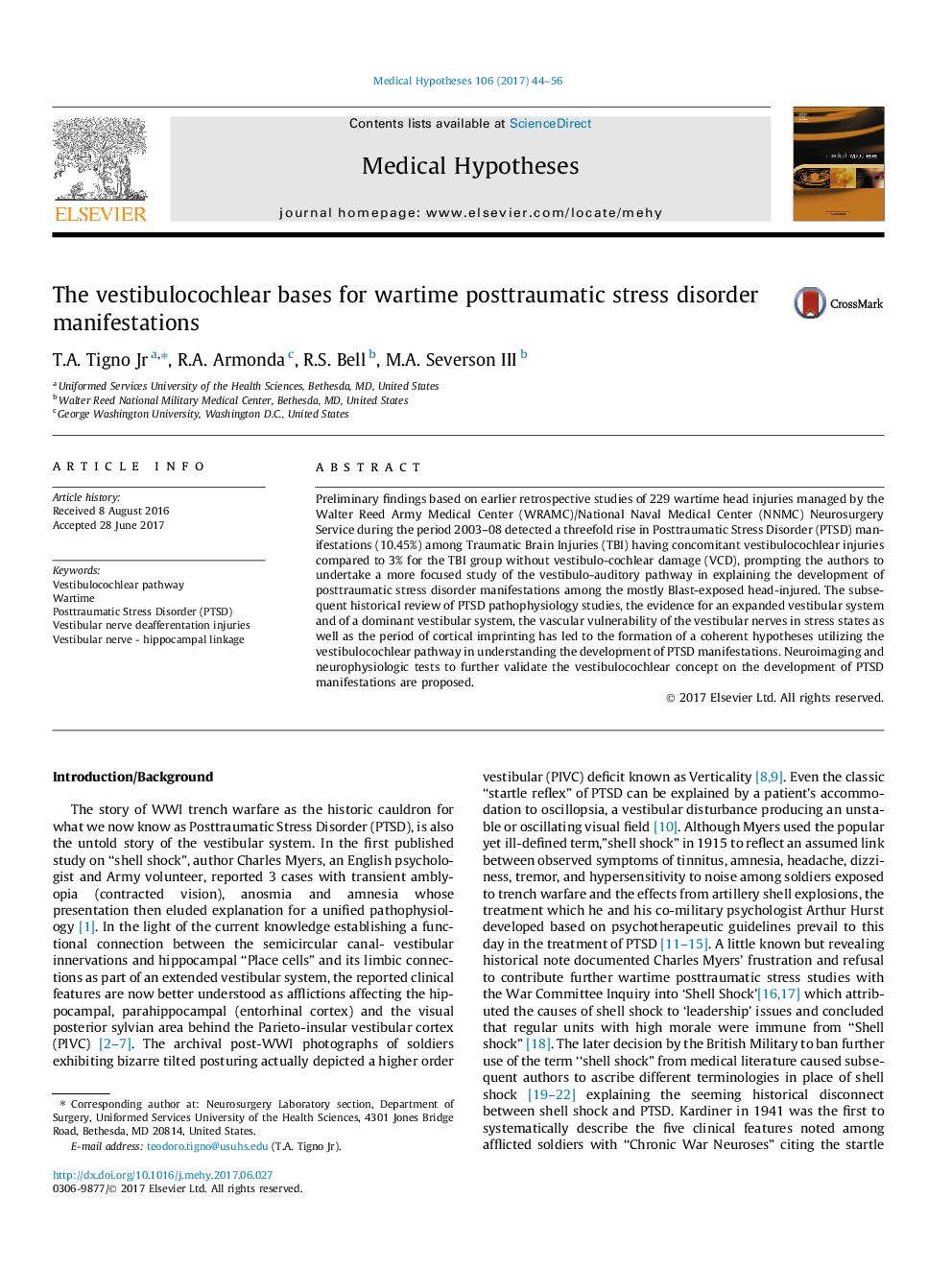| Article ID | Journal | Published Year | Pages | File Type |
|---|---|---|---|---|
| 5548474 | Medical Hypotheses | 2017 | 13 Pages |
Preliminary findings based on earlier retrospective studies of 229 wartime head injuries managed by the Walter Reed Army Medical Center (WRAMC)/National Naval Medical Center (NNMC) Neurosurgery Service during the period 2003-08 detected a threefold rise in Posttraumatic Stress Disorder (PTSD) manifestations (10.45%) among Traumatic Brain Injuries (TBI) having concomitant vestibulocochlear injuries compared to 3% for the TBI group without vestibulo-cochlear damage (VCD), prompting the authors to undertake a more focused study of the vestibulo-auditory pathway in explaining the development of posttraumatic stress disorder manifestations among the mostly Blast-exposed head-injured. The subsequent historical review of PTSD pathophysiology studies, the evidence for an expanded vestibular system and of a dominant vestibular system, the vascular vulnerability of the vestibular nerves in stress states as well as the period of cortical imprinting has led to the formation of a coherent hypotheses utilizing the vestibulocochlear pathway in understanding the development of PTSD manifestations. Neuroimaging and neurophysiologic tests to further validate the vestibulocochlear concept on the development of PTSD manifestations are proposed.
